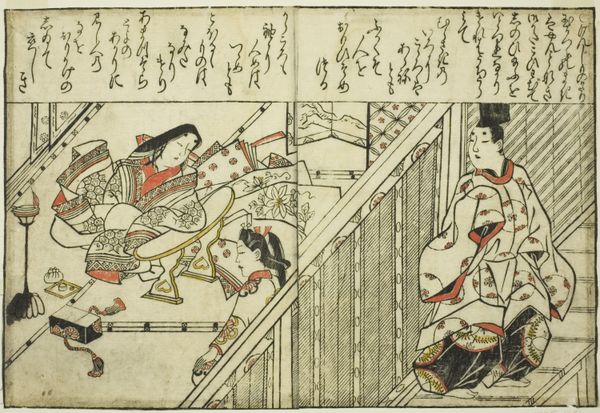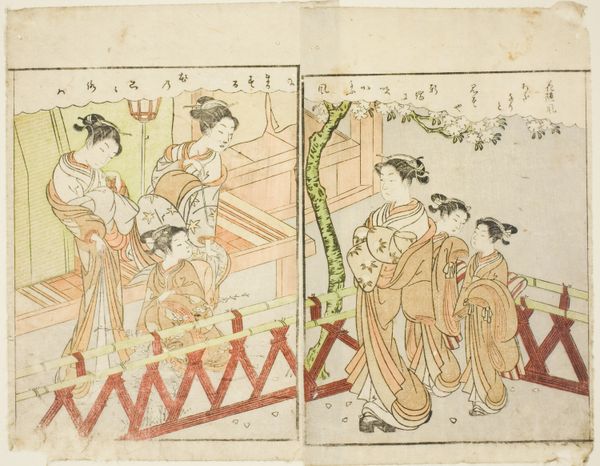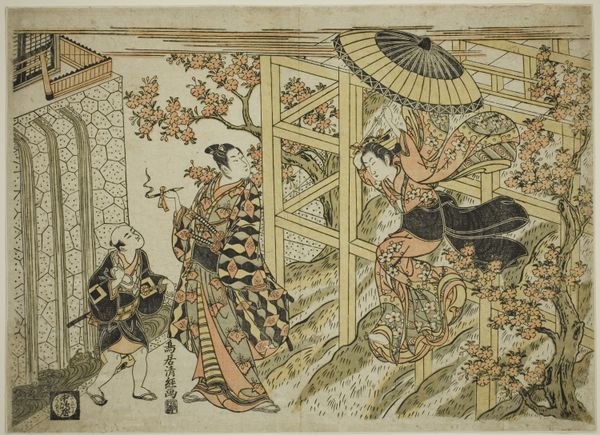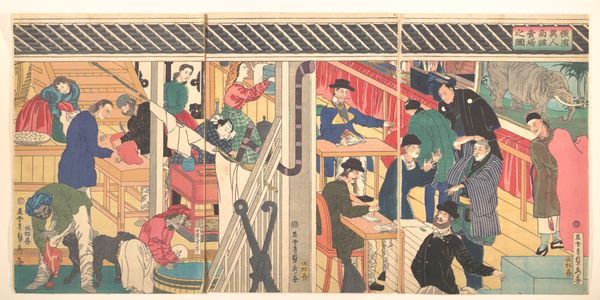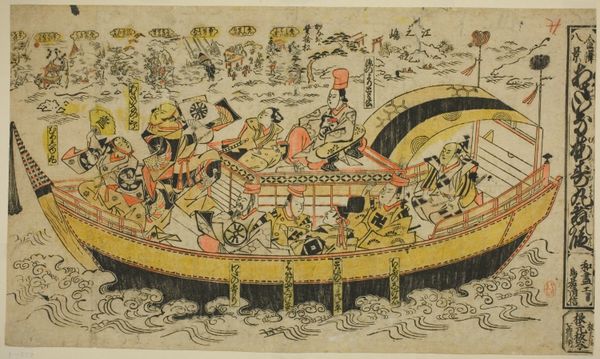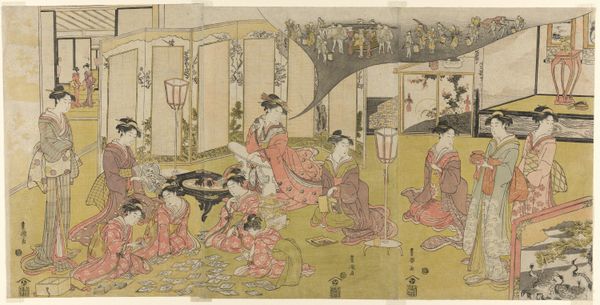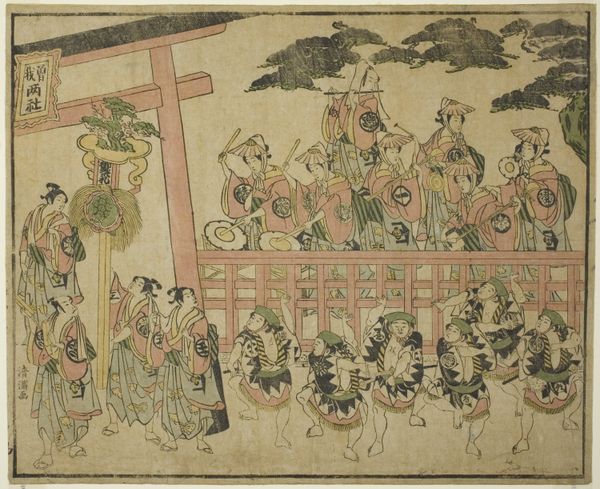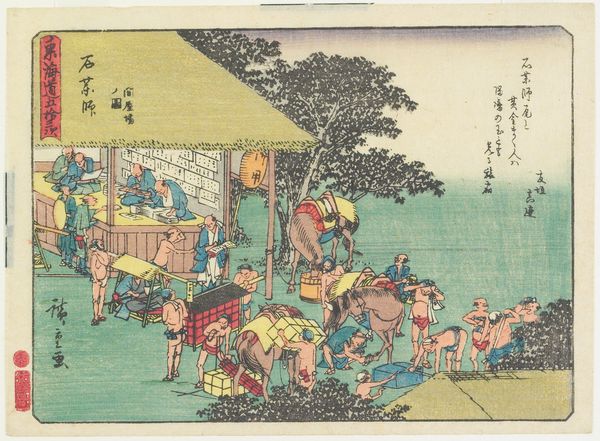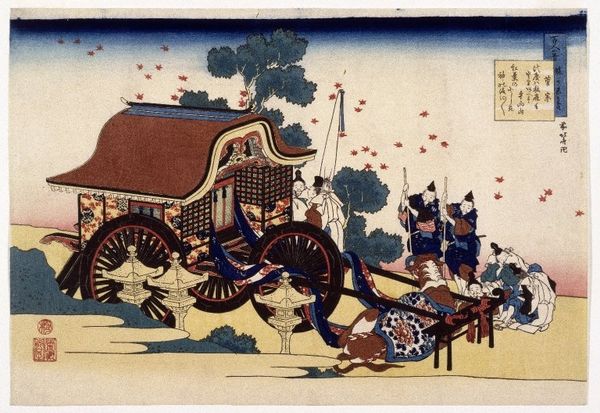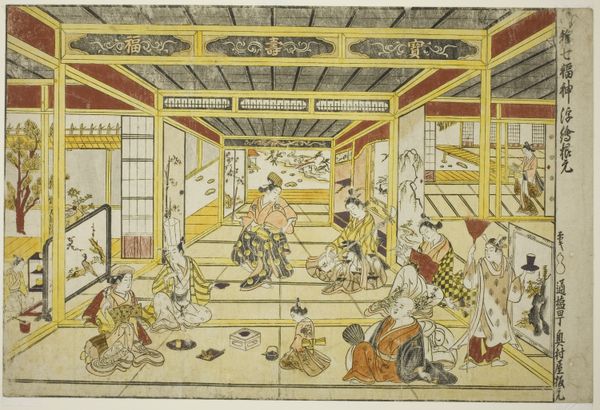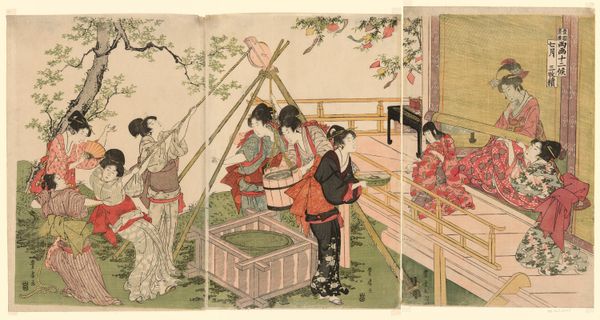
Double-page Illustration from Vol. 2 of "Picture Book of Spring Brocades (Ehon haru no nishiki)" 1771
0:00
0:00
print, woodblock-print
#
portrait
# print
#
asian-art
#
ukiyo-e
#
japan
#
figuration
#
woodblock-print
#
genre-painting
Dimensions: 17.8 × 26.9 cm (7 × 10 9/16 in.)
Copyright: Public Domain
This double-page illustration from "Picture Book of Spring Brocades" was created by Suzuki Harunobu in 18th-century Japan using woodblock printing, a process known as *ukiyo-e*. While seemingly simple, ukiyo-e prints are incredibly labor-intensive. Each color requires a separate block, meticulously carved and then printed in precise registration. The subtle gradations of color, known as *bokashi*, demand exceptional skill. This print employs *nishiki-e*, or "brocade pictures"– a technique using multiple colors to achieve a luxurious effect, mimicking the rich textiles of the era. Consider the cultural context: ukiyo-e prints were not considered "high art" but rather a popular, commercial medium. They catered to the burgeoning merchant class, depicting fashionable courtesans and scenes of urban life. The production of these prints involved a collaborative system, with artists, carvers, printers, and publishers all playing essential roles. This division of labor reflects the increasing specialization and commercialization of art in Edo-period Japan. So next time you see a *ukiyo-e* print, remember the complex processes, skilled labor, and vibrant urban culture that brought it into being.
Comments
No comments
Be the first to comment and join the conversation on the ultimate creative platform.
